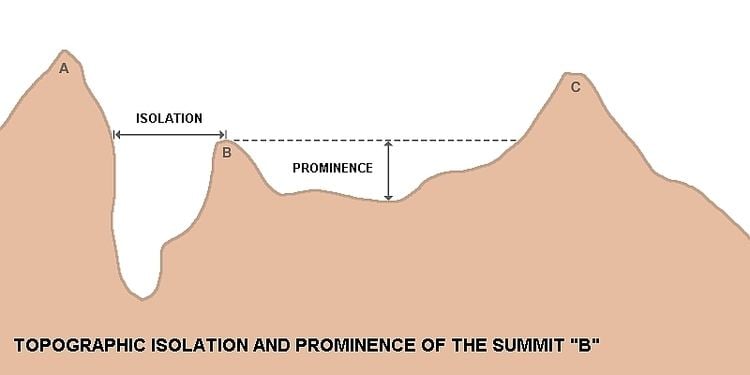 | ||
The topographic isolation of a summit is the minimum great-circle distance to a point of equal elevation, representing a radius of dominance in which the peak is the highest point. It can be calculated for small hills and islands as well as for major mountain peaks, and can even be calculated for submarine summits.
Contents
Isolation table
The following sortable table lists the Earth's 40 most topographically isolated summits.
Examples
References
Topographic isolation Wikipedia(Text) CC BY-SA
